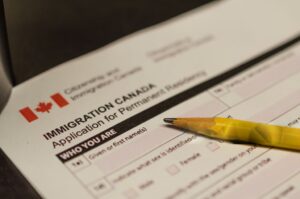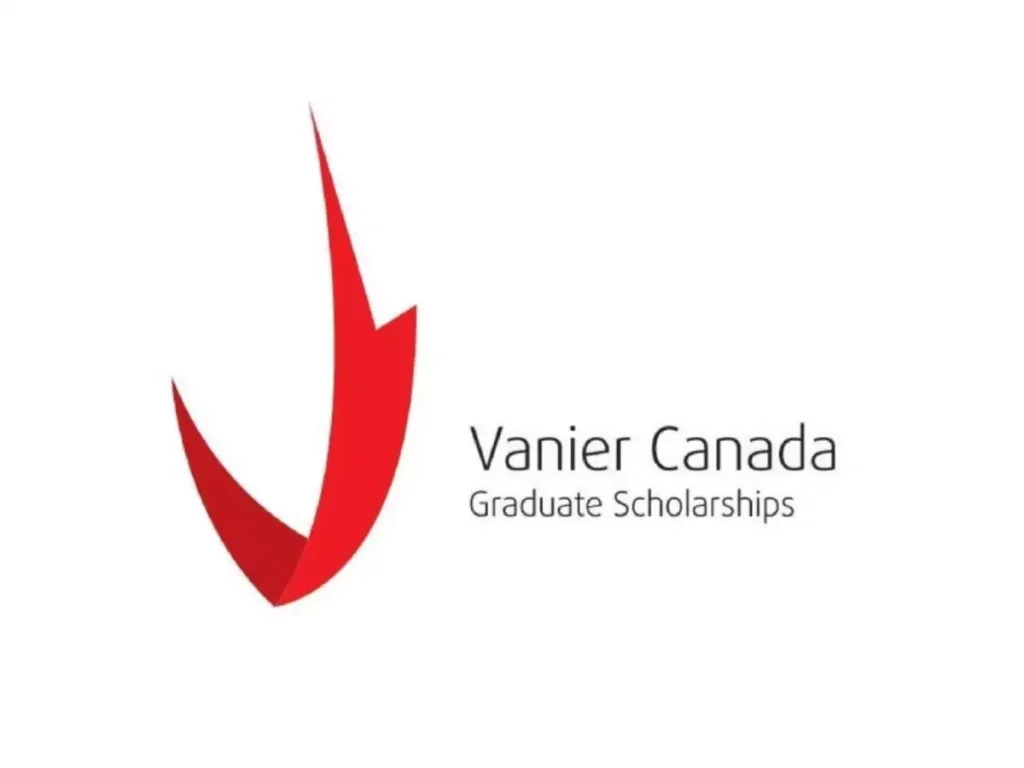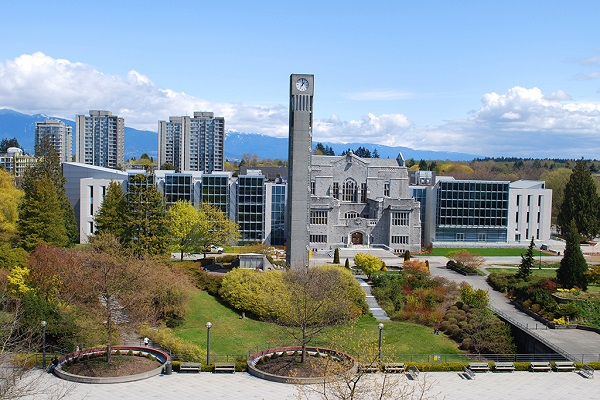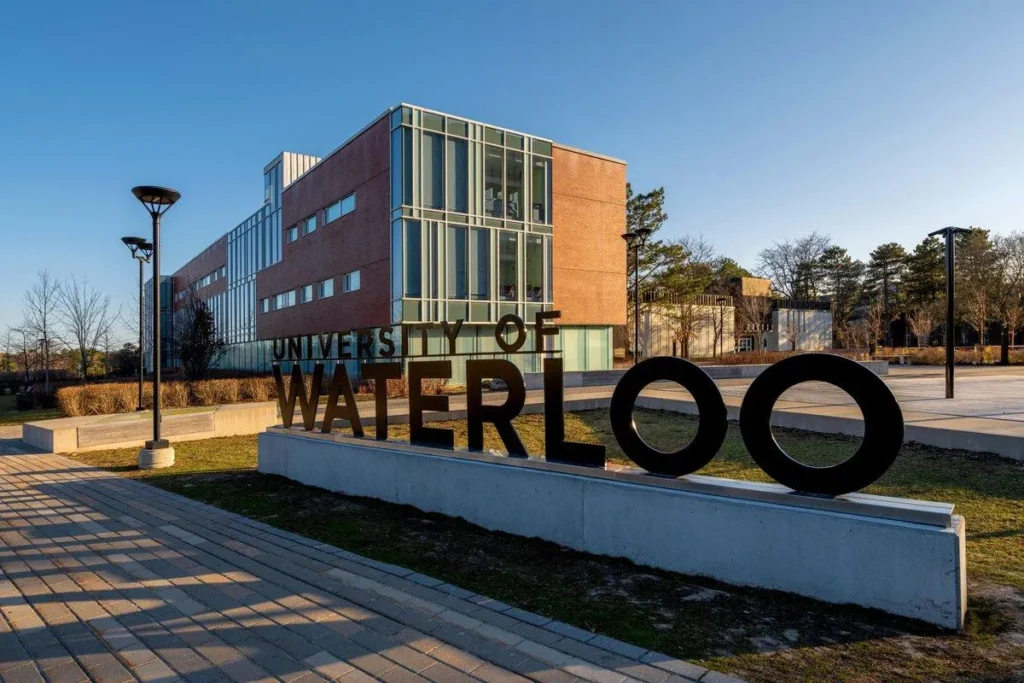
Imagine standing at the crossroads of opportunity, where every choice could lead to a brighter future for you and your loved ones. Each year, countless individuals from around the globe embark on a journey to seek better prospects and experiences, and Canada emerges as a shining beacon of hope. With its welcoming communities and diversity, understanding the easiest ways to immigrate is your first step toward embracing a new life. Whether you are looking to reunite with family, advance your career, or start a business, the Canadian immigration system offers various pathways tailored for different aspirations. In this guide, we’ll explore the vital aspects of the foreigners immigration process, providing you with the knowledge you need to take your first steps toward that pivotal journey.
Key Takeaways
- Canada has various immigration pathways tailored to individual circumstances.
- Understanding eligibility criteria is crucial for a successful application.
- Family sponsorship helps to reunite loved ones.
- Studying and working in Canada can lead to permanent residency.
- Many resources are available to guide you through the immigration process.
Understanding Canada’s Immigration System
The immigration framework in Canada offers a variety of pathways for individuals seeking to live, work, or study in this diverse country. Understanding the different Canada immigration options is essential for potential applicants. Canada’s immigration system comprises several programs tailored to different needs, including family reunification, skilled worker immigration, and more. Each program comes with specific immigration requirements, which vary based on the applicant’s situation and goals.
Overview of Immigration Programs
Canada has multiple immigration programs. These include Express Entry, the Family Sponsorship program, and the Provincial Nominee Program (PNP). Each program has its unique eligibility criteria and processes. By selecting the right program, applicants can streamline their Canadian visa application while addressing their personal and professional aspirations.
Types of Visas Available
The Canadian immigration system offers various types of visas, catering to both temporary and permanent residents. Temporary visas allow individuals to work or study in Canada for a limited time, while permanent visas, such as those obtained through Express Entry, provide a pathway to citizenship. Understanding the types of visas available assists applicants in making informed decisions that align with their long-term goals.
Points-Based System
Canada employs a points-based system to evaluate applicants. This system scores individuals based on several criteria, including age, education, work experience, and language proficiency. Each of these factors contributes to an applicant’s overall score, influencing their chances of receiving an invitation to apply for permanent residency. Familiarity with the points-based system aids potential immigrants in assessing their eligibility and preparing a compelling Canadian visa application.
Express Entry: A Fast-Track Option
The Express Entry system represents a streamlined approach for skilled workers seeking permanent residency in Canada. This immigration pathway offers an efficient way to assess qualifications and process applications, putting candidates on a fast track to a new life in Canada.
Eligibility Criteria
To qualify for the Express Entry application, candidates must meet certain eligibility requirements. These include:
- Education: A minimum of a high school diploma, although higher educational credentials may enhance chances.
- Work Experience: At least one year of continuous full-time or equivalent part-time skilled work experience within the last ten years.
- Language Proficiency: A minimum score in an accepted language test (IELTS, CELPIP, or TEF) is crucial.
- Age: Age can impact the Comprehensive Ranking System (CRS) score, where candidates between 20 and 29 years receive the highest points.
Application Process
The Express Entry process involves several key steps:
- Complete an online Express Entry profile, including personal and professional information.
- Receive a CRS score, which determines ranking in the pool of candidates.
- Wait for an Invitation to Apply (ITA) during regular draws conducted by Immigration, Refugees and Citizenship Canada (IRCC).
- After receiving an ITA, submit a complete application for permanent residency in Canada, including required documents.
- Await processing, which can often be completed in as little as six months.
Benefits of Express Entry
The Express Entry system offers numerous advantages:
- Processing Speed: Applications processed in as little as six months allow for a relatively quick transition to life in Canada.
- Flexibility: Candidates can improve their CRS score by gaining additional work experience or completing further education while in the pool.
- Greater Opportunities: Access to job offers and enhanced networking opportunities through provincial nominations or Canadian employers.
Provincial Nominee Program (PNP)
The Provincial Nominee Program allows Canadian provinces to nominate individuals who wish to migrate to their specific regions. This pathway is essential for many aspiring immigrants as it opens doors to permanent residency in Canada. Each province has its own unique criteria under this program, enabling tailored responses to local employment needs and demographic trends. Immigration to Canada through PNP serves as a viable alternative to federal immigration routes.
How PNP Works
Each province participates in the Provincial Nominee Program by selecting candidates based on their skills, work experience, and ties to the province. Those who receive a nomination can apply for permanent residency. Nominees often have a better chance of being accepted because provinces focus on immigrants who fulfill local labor shortages.
Popular Provinces for Nomination
Several provinces in Canada are recognized for their active participation in the PNP. Notably, Ontario, British Columbia, and Alberta attract many applicants due to their vibrant economies and diverse job opportunities. Each province has distinct eligibility requirements and streams that cater to different sectors, making it crucial for applicants to research their options thoroughly.
Application Process
The PNP application process generally begins with an application to a specific province for a nomination. Once nominated, individuals can apply to the federal government for permanent residency. The PNP application process usually involves submitting an online application, providing relevant documents, and possibly attending an interview. Timelines may vary, but understanding the steps involved can streamline the journey toward permanent residency in Canada.
Study Permits as a Pathway to Immigration
Studying in Canada offers significant advantages for international students. The benefits of studying in Canada extend beyond gaining academic knowledge; they include increased opportunities for future employment and the potential for a seamless transition to permanent residency. This route is particularly appealing for those looking to build a career in Canada after completing their education.
Benefits of Studying in Canada
One of the key benefits of studying in Canada is the quality of education. Canadian institutions are recognized worldwide for their high academic standards and innovative teaching methods. Additionally, international students can gain valuable Canadian qualifications that boost their employment prospects.
Studying in Canada allows students to immerse themselves in a diverse cultural environment while building a professional network. While pursuing their studies, students may also work part-time, gaining practical experience and enhancing their skills. This experience can significantly contribute to their resumes, making a compelling case when applying for jobs post-graduation.
How to Apply for a Study Permit
The application process for Canadian study permits begins with determining eligibility. Prospective students must complete the application accurately and provide necessary documentation. Applicants between 14 and 79 years old are required to submit biometrics, which simplifies future applications. A biometrics fee is applicable, ensuring the application avoids processing delays.
After submitting the application, processing occurs, which may involve the request for additional information. Once approved, the applicant will receive essential travel documents, including a study permit and, if applicable, an eTA. For further details on applying for study permits, consult the specific application guidelines.
Transitioning from Student to Permanent Resident
Upon graduation, international students may explore various pathways leading to a transition to permanent residency. One popular option is the Post-Graduation Work Permit, which allows graduates to work in Canada for up to three years, depending on the length of their study program. Gaining Canadian work experience during this period can significantly enhance the chances of qualifying for permanent residency through programs like Express Entry or provincial nomination.
Studying in Canada not only enriches academic knowledge but also provides a valuable path toward building a permanent life in this vibrant country.
Work Permits: A Temporary Solution
When considering immigration to Canada, exploring the various types of work permits in Canada offers valuable temporary immigration solutions for foreign nationals. Understanding these permits is essential for navigating the job market and determining pathways for future residency.
Different Types of Work Permits
Canada provides several categories of work permits, each tailored to distinct needs:
- Employer-Specific Work Permits: Tied to a single employer who has offered a job.
- Open Work Permits: Allow individuals to work for any employer in Canada, without restrictions.
- International Experience Canada (IEC): Designed for young people from specific countries seeking temporary work opportunities.
Employer-Sponsored Options
Employer sponsorship is a crucial aspect of many work permits in Canada. Through this process, employers can directly support foreign workers in acquiring their permits, simplifying job placement significantly. Employer sponsorship enhances the chance of success for applicants and encourages a smooth transition to life and work in Canada.
Pathway to Permanent Residency
The temporary nature of work permits does not hinder their potential to lead to permanent residency. Many individuals utilize their work permits to gain valuable Canadian work experience, which becomes an asset when applying for permanent residency programs. This step not only solidifies their status but also integrates them into the fabric of Canadian society.
Family Sponsorship: Bringing Loved Ones Together
The Family sponsorship program plays a crucial role in allowing Canadian citizens and permanent residents to reunite with their loved ones. Through immigration through family, sponsors can facilitate their relatives’ journey to Canada, fostering emotional support and strengthening bonds. Understanding the eligibility requirements, application process, and benefits of this program is essential for potential sponsors and their families.
Eligibility for Sponsorship
To qualify for the family sponsorship program, both the sponsor and the person being sponsored must meet specific criteria. The sponsor must be at least 18 years old, a Canadian citizen or permanent resident, and can demonstrate financial ability to support the sponsored individual. Eligible family members typically include spouses, common-law partners, dependent children, and other close relatives, subject to certain conditions.
Application Process
The sponsorship application process involves several steps. First, the sponsor must complete the necessary forms and provide required documentation. This includes proof of relationship, financial information, and identity documents. Once submitted, applicants should expect processing times to vary based on various factors, such as the type of relationship and the completeness of the submission.
| Step | Description |
|---|---|
| 1 | Gather required documents and forms for the sponsorship application. |
| 2 | Submit the application to Immigration, Refugees and Citizenship Canada (IRCC). |
| 3 | Wait for processing and respond to any requests from IRCC. |
| 4 | Receive a decision on the sponsorship application. |
| 5 | Upon approval, assist the sponsored individual with resettlement in Canada. |
Benefits of Family Sponsorship
Family sponsorship provides numerous advantages. It helps individuals maintain family connections while adapting to life in a new country. Through immigration through family, the emotional support offered by relatives can ease the transition for newcomers. Furthermore, this program fosters a sense of community and belonging, contributing positively to Canadian society.
Refugee and Humanitarian Programs
Canada plays a critical role in offering refuge for those seeking safety from persecution and conflict. Its robust humanitarian programs are designed to assist individuals and families who qualify for refugee status, providing a lifeline during dire situations. Understanding the nuances of refugee immigration, along with the application process and available support services, can significantly aid those in need of assistance.
Understanding Refugee Status
To be classified as a refugee, an individual must demonstrate a well-founded fear of persecution based on factors such as race, religion, nationality, political opinion, or membership in a particular social group. This definition aligns with international standards set by the United Nations, which Canada follows when processing refugee applications. International protection is granted to ensure these individuals can live without fear of harm.
Application Process for Refugees
The Canada refugee application process varies based on the individual’s circumstances. It includes several critical steps:
- Gather necessary documentation proving identity and claiming persecution.
- Submit the application to the Immigration, Refugees and Citizenship Canada (IRCC).
- Attend an interview to discuss the application and provide further details.
- Wait for the decision, which may include additional security and background checks.
This process can be complex, necessitating attention to detail and thoroughness in submission to ensure a successful outcome.
Support Services Available
After initiating the Canada refugee application, various support services are accessible to provide assistance. These services include:
- Legal Assistance: Organizations provide free or low-cost legal support to help navigate the refugee process.
- Settlement Assistance: Programs are available to aid with housing, employment, and community integration.
- Counseling Services: Mental health support is offered to address the traumatic experiences that refugees may have encountered.
Such resources play a vital role in easing the transition for newcomers, empowering them to build a stable life in Canada.
Canadian Citizenship: Your Ultimate Goal
Obtaining Canadian citizenship represents a significant milestone for many immigrants. This coveted status opens doors to various benefits and establishes a strong connection to Canada. Understanding the Canadian citizenship requirements is crucial for a successful transition. Several pathways to citizenship exist, allowing individuals to navigate the citizenship application process seamlessly.
Eligibility Requirements
To qualify for Canadian citizenship, applicants must meet specific criteria. Key Canadian citizenship requirements include:
- Being a permanent resident of Canada.
- Having lived in Canada for at least 1,095 days within the last five years.
- Proving proficiency in English or French, particularly for applicants between ages 18 and 54.
- Demonstrating knowledge of Canadian history, values, and responsibilities.
Benefits of Canadian Citizenship
Becoming a Canadian citizen carries numerous advantages. Citizens enjoy:
- The right to vote in federal, provincial, and local elections.
- Access to a Canadian passport, which facilitates travel.
- The ability to apply for government jobs that require citizenship.
- Protection under Canadian law and the opportunity to receive social benefits.
The Application Process
The citizenship application process involves several steps to ensure that all requirements are met. Key stages include:
- Gathering the necessary documents, including proof of residency and language proficiency.
- Completing the application form accurately.
- Submitting the application along with the processing fee.
- Waiting for the processing and attending an interview, if required.
Global Talent Stream: Attracting Skilled Workers
The Global Talent Stream serves as a significant initiative within Canada’s immigration framework, designed to attract skilled workers to fill essential roles within the economy. This program expedites the hiring process for Canadian employers seeking to fill specialized positions, making skilled workers immigration a more accessible pathway for newcomers. The Global Talent application is structured to simplify and streamline procedures, benefiting both applicants and employers.
What is the Global Talent Stream?
The Global Talent Stream is a part of Canada’s Temporary Foreign Worker Program. This stream allows employers to hire foreign talent when they cannot find qualified Canadian candidates. It focuses on attracting highly skilled workers in various fields, including technology and engineering, which are critical for maintaining Canada’s competitive edge.
Eligibility Criteria
To qualify for the Global Talent Stream, both workers and employers must meet specific requirements:
- Employers must demonstrate a need for foreign talent and show efforts to recruit locally before seeking skilled workers immigration.
- Workers need to possess specialized skills or experience relevant to the job offer, typically requiring a degree or equivalent qualifications.
- The job position must be listed in the Global Talent Occupations List, emphasizing roles that are in high demand.
How to Apply
The process for the Global Talent application involves several steps:
- Employers must apply for a Labor Market Impact Assessment (LMIA) that outlines their need for a foreign worker.
- Once the LMIA is approved, the skilled worker can submit their application for a work permit.
- Throughout the application process, both parties should ensure all documentation is accurate and submitted within the given timelines.
Start-Up Visa Program: For Entrepreneurs
The Start-Up Visa for entrepreneurs presents a unique opportunity for innovative individuals aiming to establish their businesses in Canada. This program stands out within the landscape of Canadian immigration for business owners, providing access to vital resources and support from designated organizations. Interested applicants will benefit from understanding the eligibility requirements and the step-by-step process necessary to submit a successful start-up visa application.
Overview of the Start-Up Visa
Canada’s Start-Up Visa Program is tailored for innovative business leaders ready to introduce new ventures to the Canadian market. The program focuses on attracting ambitious entrepreneurs and providing them with a pathway to permanent residency while fostering innovation and growth within Canada’s economy.
Eligibility Requirements
To qualify for the Start-Up Visa, applicants must meet several criteria:
- Apply as an individual or as a part of a group of up to five owners, ensuring that each member holds at least 10% of the voting rights.
- Together with the designated organization, applicants must maintain over 50% ownership.
- Satisfy the language requirement by achieving at least Canadian Language Benchmark 5 in listening, reading, writing, and speaking.
- Demonstrate sufficient funds to support themselves and any dependents.
- Ensure the business is incorporated in Canada and demonstrate active management from within the country.
Detailed information regarding the eligibility criteria can be found in the official guidelines.
The Application Process
The process for submitting a start-up visa application involves several key steps:
- Secure support from a designated organization that can provide a letter of support and a commitment certificate.
- Gather necessary documentation, including identification, business plans, and proof of funds.
- Submit the completed application to Immigration, Refugees and Citizenship Canada (IRCC).
- Await processing and respond to any requests for additional information or documentation.
By following this systematic approach, entrepreneurs can effectively navigate the complexities of the Canadian immigration for business owners and set the stage for successful business ventures in Canada.
Tips for a Successful Immigration Application
Applying for immigration can be a complex process with specific requirements. To enhance the chances of a successful immigration application, consider the following essential tips. Thorough preparation and attention to detail are crucial in ensuring that all immigration documentation is in order. Mistakes can lead to unnecessary delays or even denials, making it vital to understand the application process fully.
Common Mistakes to Avoid
Many applicants fall into common pitfalls that hinder their application. Some frequent mistakes include:
- Failing to complete the application form promptly after receiving the invitation, which is only valid for 60 days.
- Neglecting to upload all required documents, such as police certificates and proof of funds.
- Forgetting to pay all necessary fees, including processing and biometrics fees, which can cause processing delays.
- Not reviewing the application thoroughly to ensure all mandatory fields are filled out correctly.
Essential Documents Needed
The success of your application greatly depends on the immigration documentation you provide. Key documents typically needed include:
- Valid identity documents, such as passports.
- Proof of funds, which verifies that you can support yourself financially.
- Language proficiency test results to demonstrate your ability to communicate in English or French.
- Medical exams and police certificates, essential for assessing your eligibility.
For a comprehensive list of necessary documentation, you can refer to the official guidelines.
Importance of Professional Help
Seeking professional immigration assistance can significantly streamline the application process. Immigration consultants or lawyers possess the expertise to navigate the complexities of immigration law. Their support can help you avoid mistakes, ensure that all documentation is accurate, and increase the likelihood of a successful immigration application. With their guidance, applicants can focus on showcasing their strengths and meeting all necessary requirements, ultimately leading to a positive outcome.
Conclusion: Your Journey to Canada
As we’ve explored throughout this article, various pathways exist for individuals seeking to embark on an immigration journey to Canada. From the Express Entry and Provincial Nominee Programs to family sponsorships and study permits, each option offers unique benefits tailored to different circumstances and goals. Understanding the scope of these immigration options can empower you to make informed decisions on your journey towards becoming a Canadian resident.
Taking the first step in your immigration journey to Canada can be both exciting and daunting. Remember, there are ample resources to support you through the process. Engaging with community organizations, government programs, and professional consultants can provide invaluable assistance as you navigate your immigration journey. Don’t hesitate to reach out; the pursuit of your Canadian dream is within reach.
In closing, it’s essential to remain informed and proactive. Familiarize yourself with the immigration landscape and stay updated on any changes in policies or procedures. With careful planning and the right resources for immigrants, your aspirations for a new life in Canada can become a reality. Consider taking the leap—your future awaits!
FAQ
What are the easiest ways to immigrate to Canada?
The easiest ways to immigrate to Canada typically include the Express Entry system, Provincial Nominee Programs (PNP), studying in Canada, family sponsorship, and applying for a work permit. Each option has specific requirements and procedures that should be considered based on individual circumstances.
What is the Express Entry system?
The Express Entry system is a fast-track immigration process that allows skilled workers to apply for permanent residency in Canada. It uses a points-based system to evaluate candidates based on factors like age, education, work experience, and language proficiency.
How can I obtain a study permit to study in Canada?
To obtain a study permit for Canada, you must first be accepted by a designated learning institution. You’ll need to provide proof of sufficient funds, a letter of acceptance, and may have to undergo a medical examination, depending on your country of origin.
What are the requirements for family sponsorship?
To sponsor a family member, you must be a Canadian citizen or a permanent resident, prove your financial capability to support your family member, and ensure you meet specific eligibility requirements set by Immigration, Refugees, and Citizenship Canada (IRCC).
What is the application process for permanent residency in Canada?
The application process for permanent residency can vary depending on the program but generally involves submitting an online application through the IRCC website, paying required fees, providing documentation to verify identity, and undergoing medical and security checks.
Are there immigration options for refugees in Canada?
Yes, Canada offers various programs for refugees and individuals in need of humanitarian protection. Applicants can apply for refugee status both from inside Canada and from abroad.
How long does it take for a Canadian visa application to be processed?
Processing times for Canadian visa applications can vary greatly depending on the type of visa, the applicant’s country of origin, and the completeness of the application. Generally, it can take anywhere from a few weeks to several months.
What is the Global Talent Stream?
The Global Talent Stream is a program that allows Canadian employers to temporarily hire foreign workers in specialized occupations. This stream aims to help businesses attract the skills they need quickly to grow and innovate.
How can I transition from a temporary work permit to permanent residency?
Transitioning from a temporary work permit to permanent residency often involves applying through specific immigration programs such as the Canadian Experience Class under Express Entry, which requires meeting certain criteria based on your work experience in Canada.
Why is it important to consult with immigration professionals?
Consulting with immigration professionals such as consultants or lawyers can greatly increase the success rate of your application. They can provide guidance on immigration requirements, assist in completing forms accurately, and help address any complexities in your case.






